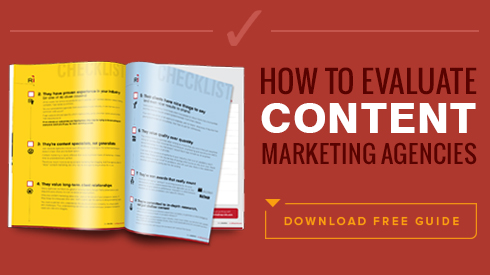7 decisions to make before beginning a content project
Content projects — such as website updates and new bios, practice group descriptions, case studies and project descriptions — may seem simple at first glance. Just figure out what needs to be written, do the research, conduct subject-matter-expert interviews and start writing…. Right?
Not so fast.
Before you ever set fingers to keyboard, you must first make several key decisions that will guide your content project, saving you from future headaches, disagreements and inconsistent (and thus unprofessional) content.
1) What is our tone of voice?
First, determine your tone of voice, aka your brand personality. Are you elite and sophisticated? Or hard-working and determined? Conservative or cutting-edge? Professional or more business casual?
For most professional services firms like law firms or architecture, engineering and construction firms, the tone should be professional, smart and forward-thinking. However, it’s important to differentiate your firm with a distinctive tone of voice.
If you’re not sure what your tone of voice is, CoSchedule recommends a helpful framework:
We are [insert desired perception], but we are not [insert antonym of desired perception].
CoSchedule provides these examples:
- We are professional but not stuffy.
- We are smart but not arrogant.
- We are technology savvy but not inaccessible.
Once you’ve determined your tone of voice, provide it to your writer to use as a guideline. A professional content writer must be able to adapt to varying styles and effectively convey your tone of voice.
2) What is our content style?
Your content style includes things like:
- Are we Oxford comma people?
- One space after a sentence or two?
- While active voice is preferable, are we okay with passive voice sometimes?
- Should we use first or third person when referring to ourselves?
- Past, present or future tense?
- How should the firm or company name be written? Do we include “LLC” or “Inc.” after the name? Can we ever shorten the name? (For example, we use “Rep Ink” often.)
- Do we use first names or last names? What about Mr., Mrs. and Ms. titles?
- How should the firm’s or company’s address be written? Do we abbreviate Street or Suite?
- What case style do we use for headlines and subheads? Title case or sentence case?
- Do we use subheads, bulleted lists and other formatting tools to make copy more scannable? What about italics, bold or underline text?
- How do we handle brand names and trademarks?
- Do we write out numbers or use numerals?
An easy way to make these decisions is to agree on a style guide such as The Chicago Manual of Style or The Associated Press Stylebook.
In my experience, most companies and firms have a preferred style guide but make several exceptions, for example capitalizing formal titles, even when they follow a name. The key is consistency — make a decision and stick to it.
3) What page format are we using?
While the content can drive the page format, it is often helpful to think through what the final page will look like before you begin writing.
For example, will you have a short, elevator-pitch-style paragraph at the beginning? Will there be sections that expand? What about a side-bar with all the technical details (or in the case of a bio, details such as university degrees and certifications)?
An easy way to make these decisions is to create a mock-up of the content piece (such as a bio or project overview) and use that as a guideline for the rest of the pieces.
4) What key messages do we want to convey?
Your messaging strategy should include things such as:
- Key differentiators (why prospects should work with you versus your competitors)
- Value propositions (what you do for clients and the benefit)
- Supporting points to reinforce your value proposition — in other words, reasons to believe your value and how you deliver on it
Your messaging should also address your clients’ needs. One way to ensure you always develop client-focused copy is to develop buyer personas that include clients’ informational needs and preferences, such as:
- What do they already know?
- What do they want to know?
- What is their sophistication level with our services?
As repetition is key to owning a position, your key messages should be included throughout all of your marketing materials.
5) What are our SEO keywords?
This one is pretty straightforward: If you have done your search engine optimization (SEO) research, you’ll have a list of keywords and phrases that should be incorporated into your web copy.
While the days of keyword stuffing are long gone, knowing your SEO keywords will help a writer with word choices, prioritizing certain words and phrases that advance your SEO goals.
6) What is our editing process?
The editing stage is where many content projects go haywire. By creating an editing process, you’ll reduce back-and-forth headaches and unnecessary surprises, saving time and money in the long run.
You should decide:
- Who needs to review each piece of content?
- How long will they have to review it?
- How will feedback be compiled and routed to the writer(s)?
- Who has final say when disagreements happen?
Believe it or not, asking every single person in your company or firm to weigh in is almost never a good idea. One way to avoid this recipe for disaster is to form an editing committee. Often this includes the heads of each department or practice group. You should educate the reviewers in advance on the goals for the content and your tone of voice, content style, formatting and messaging choices.
To set timeframes, work backward from the publish date. Be firm on your timeline, and let the reviewers know that if they don’t meet the deadline, the copy will be approved as-is, no exceptions.
Finally, avoid sending every piece of feedback to your writer(s) before collating the edits and reviewing them for contradictions and inconsistencies.
7) What rules must we comply with?
If you’re in a regulated industry (such as the law, with each state bar’s attorney advertising rules), your content must comply with certain rules, which are critical for your writers to understand and apply.
If your writers aren’t familiar with your industry, supply them with the rules and a high-level checklist of words and phrases to avoid.
Need help with your next content project? Contact me at michelle@rep-ink.com or 904-374-5733.










